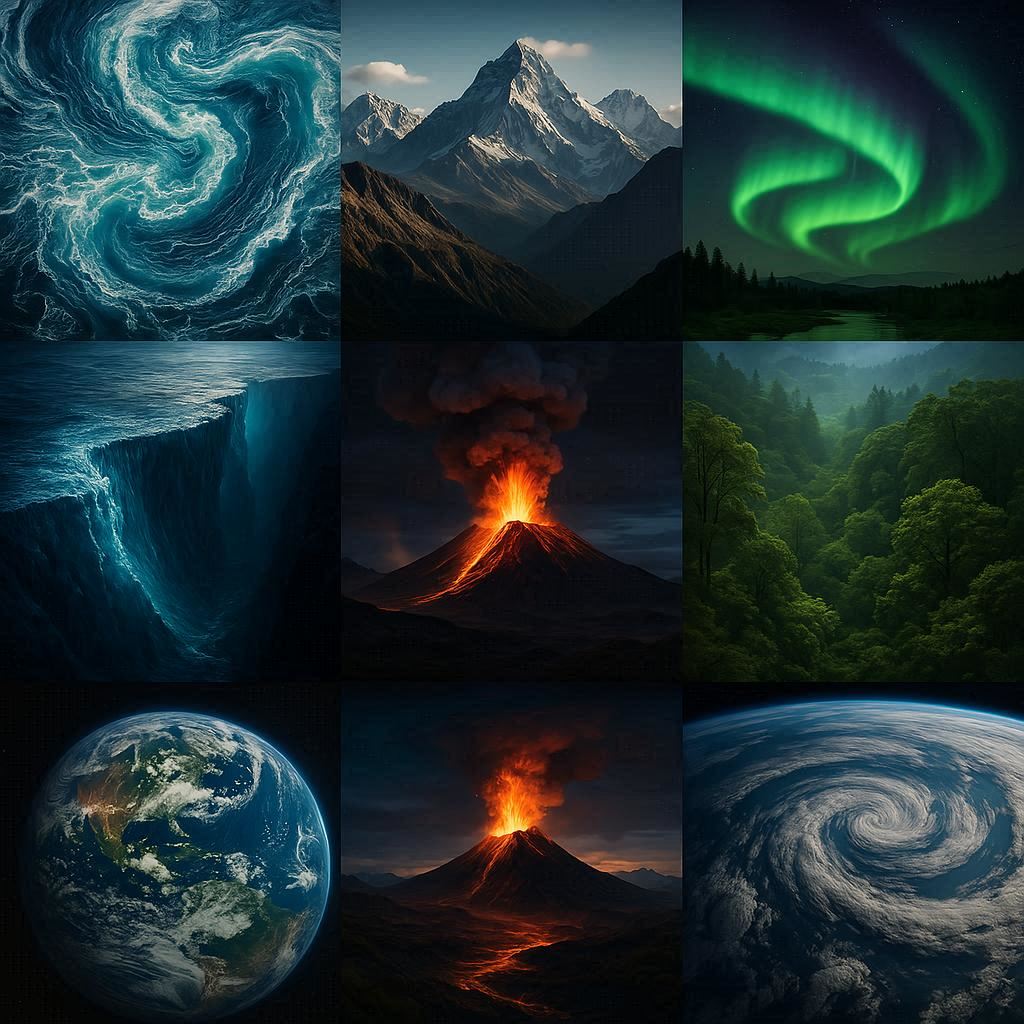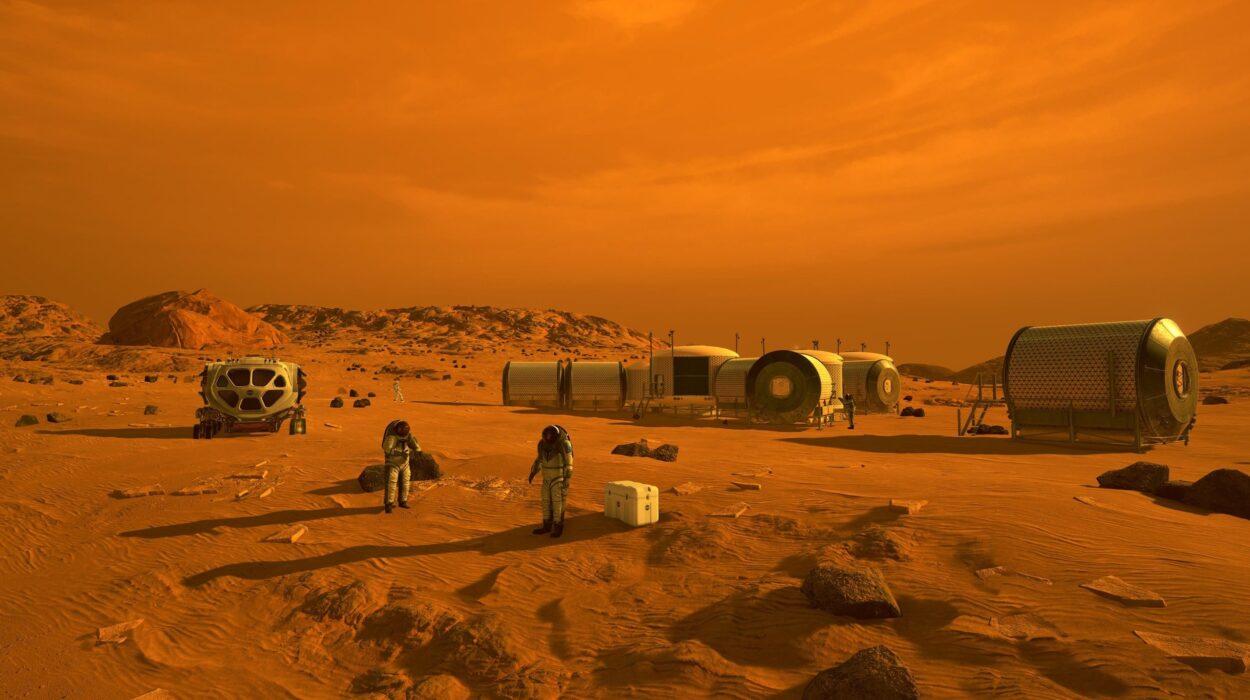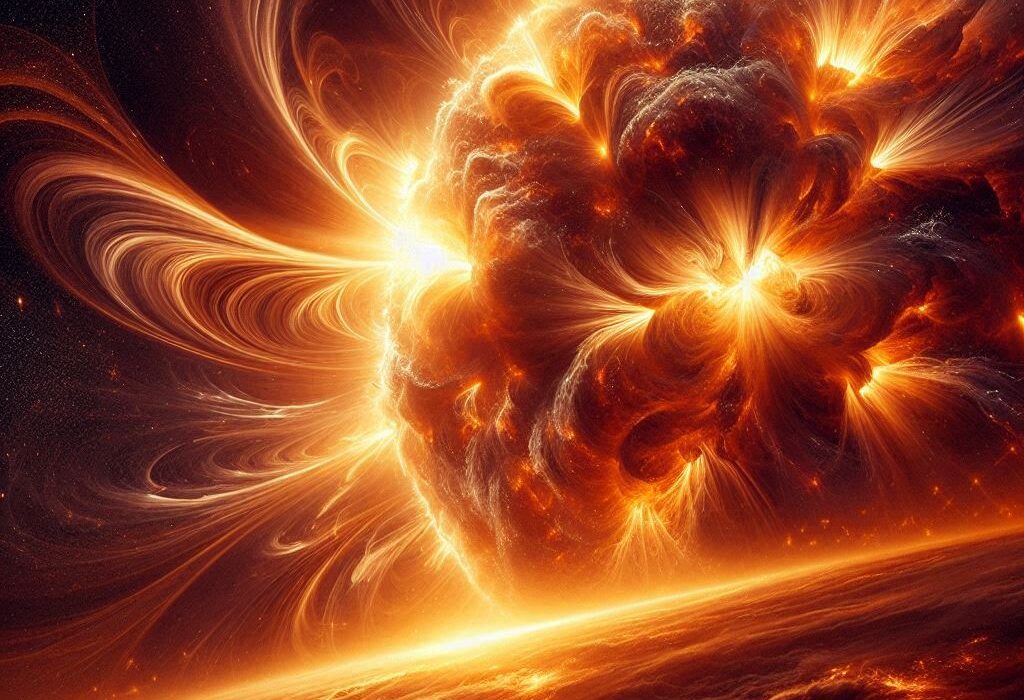The Earth is more than the ground beneath our feet or the blue sky above; it is a dynamic, living planet full of astonishing mysteries. From its molten core to its highest mountain peaks, from the depths of the oceans to the far reaches of the atmosphere, our world is constantly shifting, evolving, and surprising us. Every river, forest, and desert tells a story, while hidden forces like tectonic plates and magnetic fields shape life in ways we rarely notice. Exploring Earth’s secrets reveals a planet both fragile and resilient, ordinary yet extraordinary, and utterly awe-inspiring in its complexity and beauty.
1. The Earth Isn’t a Perfect Sphere
Despite often being depicted as a perfect globe, Earth is actually an oblate spheroid. Its equatorial diameter is about 43 kilometers larger than the pole-to-pole distance. This bulging shape is caused by the planet’s rotation, which pushes the equator outward. This subtle distortion affects everything from satellite orbits to ocean currents, reminding us that even our seemingly solid planet is dynamic and ever-changing.
2. Earth’s Inner Core Is as Hot as the Sun
Deep beneath our feet, at the very center of the planet, the inner core reaches temperatures of approximately 5,400°C (9,800°F), comparable to the surface of the Sun. Yet this molten iron ball remains solid due to the immense pressure surrounding it. It’s a stark reminder that the world we walk upon hides a furnace beneath, invisible yet essential to life above.
3. Our Planet Is Made of Layers
Earth is composed of four main layers: the crust, the mantle, the outer core, and the inner core. Each layer has distinct physical and chemical properties. The crust we live on is only about 1% of Earth’s total volume, making our familiar ground just a thin shell over a churning, molten interior. It’s humbling to realize how small our personal experience is in the context of the planet.
4. Mountains Are Growing and Sinking
Mountains are not permanent. The Himalayas, for example, rise approximately 5 millimeters each year due to tectonic collisions. Meanwhile, erosion gradually wears them down, returning material to rivers and oceans. Mountains are living monuments of Earth’s constant motion, forever shifting and reshaping.
5. Earth’s Magnetic Field Protects Life
The magnetic field generated by the movement of molten iron in the outer core shields us from harmful solar radiation. Without it, the Sun’s charged particles could strip away the atmosphere, making Earth uninhabitable. Magnetic poles drift over time, and the field even flips every several hundred thousand years, highlighting our planet’s restless nature.
6. Earth Quakes Constantly, Even When We Don’t Notice
Around 500,000 detectable earthquakes occur each year, though only about 100,000 are felt. Many quakes are minor, yet their cumulative effect shapes landscapes, triggers tsunamis, and reminds us of the tectonic forces at work beneath the surface. Earth is never truly still; it’s alive with motion.
7. Oceans Cover Most of the Planet
About 71% of Earth’s surface is covered by water, yet we have explored only a fraction of the oceans. Vast underwater mountains, deep trenches, and mysterious creatures remain largely unknown. The oceans are a living testament to Earth’s complexity and our limited understanding of our own world.
8. Earth’s Atmosphere Is a Delicate Blanket
The atmosphere is a thin layer of gases only about 480 kilometers thick, protecting life from ultraviolet radiation and regulating climate. Its composition—78% nitrogen, 21% oxygen, and trace gases—has remained relatively stable for millions of years. Yet human activity now threatens this delicate balance, altering weather patterns and impacting ecosystems.
9. Earth Has More Than One Type of Life
Life exists not only on the surface but also deep underground, in extreme heat, extreme cold, and extreme pressure. Microbes thrive miles below the crust and inside Antarctic ice. Earth has proven that life is incredibly resilient, adapting to environments previously thought uninhabitable.
10. Plate Tectonics Shape the Planet
Earth’s crust is broken into plates that float on the semi-molten mantle. Their movements create mountains, volcanoes, earthquakes, and ocean basins. Plate tectonics is the engine of geological change, reshaping continents and oceans over millions of years.
11. Volcanoes Can Be Explosive and Deadly
Volcanoes are gateways to Earth’s molten interior. Some, like Mauna Loa, release lava slowly, building land over time. Others, like Krakatoa, erupt violently, causing devastation thousands of kilometers away. Volcanoes remind us of the immense power hidden within the planet.
12. The Deepest Point on Earth Is Mind-Boggling
The Mariana Trench in the Pacific Ocean reaches about 11 kilometers below sea level. If Mount Everest were placed at the bottom, its peak would still be submerged by over two kilometers of water. The trench is home to unique species and extreme conditions that push the boundaries of life.
13. Earth Spins at Incredible Speed
Earth rotates at roughly 1,670 kilometers per hour (1,037 mph) at the equator, yet we don’t feel it. This dizzying speed affects weather patterns, ocean currents, and the length of our days. Earth is a spinning marvel, silently whirling through space.
14. The Planet Moves Through Space Rapidly
Not only does Earth spin, but it also orbits the Sun at about 107,000 kilometers per hour (66,600 mph). Within our galaxy, the solar system hurtles around the Milky Way at 828,000 kilometers per hour (514,000 mph). Despite these staggering speeds, we experience stability, thanks to the delicate balance of gravitational forces.
15. Earth’s Atmosphere Produces Stunning Phenomena
Auroras occur when charged particles from the Sun interact with the atmosphere near the poles, creating dazzling displays of light. These natural spectacles are reminders of Earth’s connection to the cosmos, a visible manifestation of invisible forces.
16. Earth Has Natural Time Machines
Ice cores, sediment layers, and tree rings act as historical records. They reveal past climates, volcanic eruptions, and solar activity. Scientists use these natural archives to understand Earth’s history and predict future changes, giving us glimpses into times long before humans existed.
17. Earth’s Water Is Finite and Ancient
Every drop of water on Earth has existed for millions of years, cycling through rivers, clouds, ice, and oceans. The water you drink may have been part of a dinosaur’s world. This continuous cycle connects every living being across time and space.
18. Earth’s Gravity Is Not Uniform
Gravity varies slightly depending on location, influenced by mountains, ocean trenches, and dense rock formations. Satellites measure these variations to map Earth’s mass distribution. Our experience of “weight” is subtly different everywhere, reminding us that even gravity is dynamic.
19. Earth Experiences Slow Rotational Changes
The length of a day isn’t constant. Earth’s rotation slows by about 1.7 milliseconds per century due to tidal friction from the Moon. Over millions of years, this gradual change affects climate and life cycles, highlighting Earth’s subtle yet constant evolution.
20. Earth Has Hidden Supercontinents
The continents we see today were once joined in massive supercontinents like Pangaea. Plate tectonics continues to shape the future, and scientists predict a new supercontinent could form in 200–300 million years, a reminder that the Earth we know is only temporary.
21. Earth Produces Natural Light Shows Underground
Bioluminescent organisms in caves and deep-sea environments create ethereal glows. These lights are produced by chemical reactions within living cells, a fascinating adaptation that illuminates the darkness of unseen worlds.
22. Earth’s Climate Has Always Changed
The planet has cycled through ice ages and warm periods for millions of years. These changes are driven by variations in orbit, solar energy, and atmospheric composition. Understanding this long history helps contextualize modern climate change, showing the fragility of current balances.
23. Earth Can Produce Massive Tsunamis
Underwater earthquakes and volcanic eruptions displace enormous volumes of water, triggering waves that travel across oceans at jetliner speeds. Tsunamis are reminders of Earth’s power and the interconnectedness of oceanic and geological systems.
24. Earth Has Endless Mineral Diversity
Over 5,000 minerals have been identified on Earth, each with unique properties and structures. From common quartz to rare gemstones, these minerals form the building blocks of rocks, technology, and life itself.
25. Earth Has a “Breathing” Atmosphere
Forests and oceans release and absorb gases constantly, acting like a living lung. Photosynthesis and respiration balance oxygen and carbon dioxide, sustaining life. Earth’s systems are interconnected, operating in a delicate rhythm that keeps life thriving.
26. Earth’s Crust Is Thin and Fragile
The crust is just a thin shell over a massive, molten interior. Oceanic crust is only 5–10 kilometers thick, while continental crust averages 30–50 kilometers. This thin layer holds all terrestrial life, emphasizing our fragility and reliance on the planet’s protective surface.
27. Earth Produces Natural Radiation
Radioactive elements like uranium and thorium are naturally present in rocks and soil, releasing energy that contributes to heat in the mantle. This heat drives mantle convection, fueling volcanoes, earthquakes, and tectonic activity. Radiation is part of the planet’s inner heartbeat.
28. Earth’s Oceans Are Deeply Connected
Ocean currents act like a circulatory system, distributing heat, nutrients, and oxygen worldwide. The Gulf Stream, for example, warms Europe and regulates global climate. Disruptions in this system can have cascading effects, proving that Earth’s oceans are alive and interconnected.
29. Earth’s Seasons Are Tilted, Not Orbit-Shaped
Seasons result from Earth’s axial tilt of 23.5 degrees, not its distance from the Sun. This tilt creates variations in sunlight, leading to the cyclical changes in temperature and daylight we experience each year.
30. Earth Has Atmospheric Layers
The atmosphere isn’t uniform; it consists of layers such as the troposphere, stratosphere, mesosphere, thermosphere, and exosphere. Each layer has distinct properties and functions, from weather formation to shielding against cosmic radiation.
31. Earth Has Natural Satellites Beyond the Moon
While the Moon is Earth’s primary satellite, temporary “mini-moons” have been observed, small asteroids captured temporarily by Earth’s gravity. These fleeting companions highlight the dynamic interactions between our planet and the cosmos.
32. Earth’s Soil Is Alive
Soil is more than dirt; it’s a complex ecosystem containing billions of microorganisms per teaspoon. These organisms recycle nutrients, support plant growth, and maintain the health of ecosystems. Soil is the foundation of life, teeming with unseen activity.
33. Earth’s Weather Is Driven by Energy Balance
Weather systems arise from uneven solar heating, Earth’s rotation, and atmospheric dynamics. Hurricanes, tornadoes, and monsoons are expressions of energy redistribution, showcasing Earth’s power and unpredictability.
34. Earth’s Volcanoes Can Create New Land
Lava flows from volcanic eruptions can build islands, such as the Hawaiian archipelago. Earth continually reshapes itself, sometimes creating entirely new habitats from molten rock.
35. Earth Has Gigantic Canyons
The Grand Canyon is iconic, but Earth contains countless deep gorges carved by rivers over millions of years. These formations reveal layers of geological history, telling stories older than humanity itself.
36. Earth’s Rivers Shape Continents
Rivers erode rock, transport sediment, and deposit nutrients, sculpting landscapes over time. The Nile, Amazon, and Yangtze have influenced civilizations for millennia, connecting Earth’s physical processes to human history.
37. Earth’s Ice Sheets Contain Vast Water
Greenland and Antarctica hold most of Earth’s freshwater. Melting ice sheets can raise sea levels, affecting millions of people. Ice is not just frozen water—it’s a dynamic component of the global climate system.
38. Earth Has Extreme Landscapes
From deserts to rainforests, volcanoes to glaciers, Earth’s landscapes are astonishingly diverse. Each biome supports unique ecosystems, showing the adaptability of life to every imaginable environment.
39. Earth’s Atmosphere Expands and Contracts
The atmosphere swells during the day as it warms and contracts at night as it cools. Seasonal changes also affect density, influencing satellite orbits and weather patterns. The atmosphere is alive with motion, unseen yet essential.
40. Earth Has Natural Nuclear Reactors
Centuries ago, natural nuclear fission reactions occurred in Gabon, Africa. Uranium deposits achieved self-sustaining chain reactions naturally. Earth, it seems, has experimented with atomic energy long before humans understood it.
41. Earth Experiences Micrometeorite Showers
Tiny particles from space constantly strike Earth, many undetectable to humans. Over millions of years, these micrometeorites have added measurable mass to the planet, slowly altering its surface and composition.
42. Earth’s Tides Are Cosmic Conversations
The Moon’s gravitational pull produces tides, affecting oceans, coastal ecosystems, and even the rotation of the planet. Earth and Moon engage in a continuous gravitational dance, illustrating cosmic interconnectedness.
43. Earth Can Generate Lightning
Lightning is nature’s electrical discharge, occurring when charge differences in clouds or between clouds and ground reach a critical point. Each bolt can heat the air to 30,000 Kelvin, hotter than the Sun’s surface. Lightning is a reminder of Earth’s raw, untamed power.
44. Earth’s Continents Drift Slowly
Pangaea split apart over 200 million years ago, and continents continue to move at a rate of centimeters per year. Over geological time, the world we know today will look entirely different, proving that Earth is always in motion.
45. Earth Has Underground Rivers
Not all water flows above ground. Some rivers travel deep beneath the surface, carving caves and transporting minerals. These hidden waterways sustain ecosystems far removed from sunlight.
46. Earth Produces Natural Lasers
In rare conditions, molecules in the atmosphere can amplify light, creating laser-like emissions. These phenomena are subtle but demonstrate the unexpected complexity of natural processes.
47. Earth’s Forests Breathe Carbon
Forests absorb carbon dioxide and release oxygen through photosynthesis, acting as lungs for the planet. Deforestation disrupts this balance, emphasizing how human activity directly influences Earth’s life-support systems.
48. Earth’s Magnetic Poles Move
Magnetic north drifts several kilometers per year due to fluid motions in the outer core. Compass readings change over decades, and occasionally, the field may even reverse completely. Earth is never static, even in its invisible forces.
49. Earth’s Night Sky Is a Mirror of Its History
Stars we see tonight may be long dead. Light takes years to reach us, so every glance at the night sky is a journey through time. Earth, floating in space, provides the vantage point to witness the universe’s history.
50. Earth Is Unique in the Solar System
While Mars, Venus, and other planets have fascinating features, Earth remains unique in supporting life as we know it. Its atmosphere, water, magnetic field, and distance from the Sun combine to create an extraordinary cradle for life—a miracle of cosmic circumstances.
Earth is more than just a home. It’s a living, breathing, spinning, shifting, molten, magnetic, life-sustaining wonder. Each fact we uncover reshapes our understanding, revealing a planet that is at once familiar and astonishingly alien. The more we explore, the more we realize that our planet is an intricate masterpiece, a dynamic system of forces and life, reminding us that we are part of something far larger and far more incredible than ourselves.






